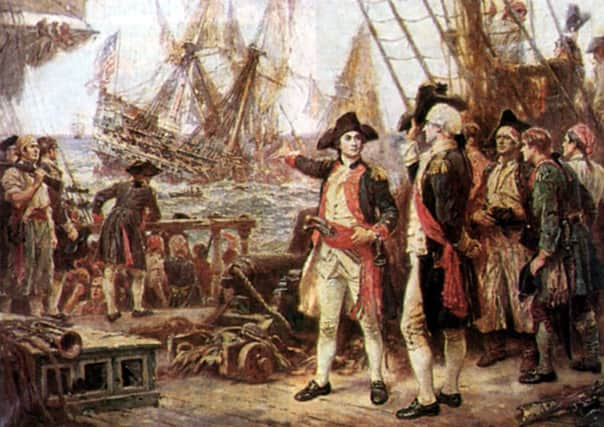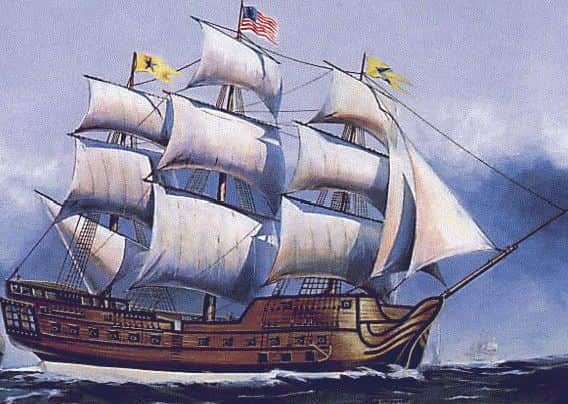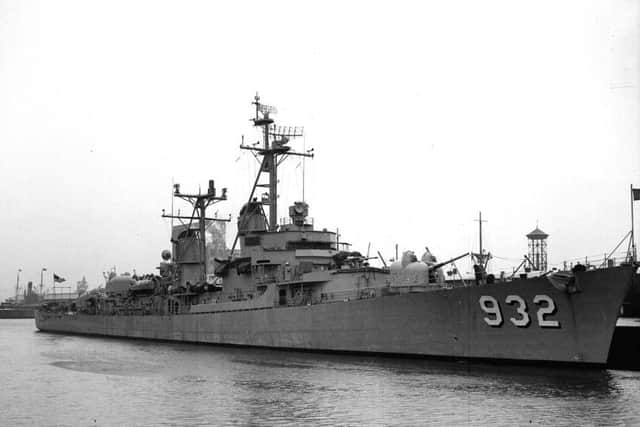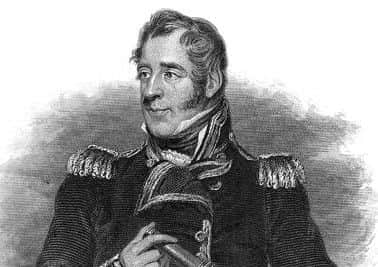How a Scot helped forge the US Navy


Scotland’s contribution to the maritime world stretches far beyond the shipyards of the Clyde, with more than one Scot involved in marine leadership, piracy and even early chemical warfare.
The seas of the late 18th and early 19th centuries were treacherous to even the most hardened of seafarers. Bereft of motorised power in their early days, large ships would plod across the Atlantic from ports in Glasgow and Liverpool to the New World. These treks would take anywhere between two to six weeks depending on weather conditions, the size of the ship and the ability and experience of the captain.
Advertisement
Hide AdInto this world was born John Paul Jones in 1742, who began his naval career aged only 13. Born at Arbigland, Kirkbean, on the south-west coast of Scotland, Jones spent the following eight years of his life travelling between Britain and the West Indies on various merchant and slaving ships before helping to establish the earliest version of the US Navy - the Continental Navy - in 1775. Jones’ command of hastily-converted warships during the American Revolutionary War resulted in important psychological victories for the colonised forces; he is, in effect, one of America’s earliest war heroes.


Impressment, though a dying trend by the late 1700s, was still practiced by the British Navy in order to maintain a steady number of soldiers (with many forced to join against their will). Once aboard, life at sea was rigorously maintained to the highest standards of 18th-century cleanliness in order to stave off diseases such as dysentery and scurvy, Sailors, though, didn’t enjoy the same level of cleanliness that we’re accustomed to; baths while out at sea were rare.
Wages were typically paid three months in arrears by the Royal Navy so as to discourage desertion amongst the ranks. Despite the harsh discipline meted out by crew members for offences such as disobeying orders or theft from crew members, the lure of riches from enemy ships caught as prizes brought many men to the trade.
The Scot’s journey on a brig sharing first name in 1768 saw him promoted rapidly, following the death of his ship’s captain and first mate due to yellow fever. He kept a 10 per cent share of the ship’s riches after successfully navigating the ship home and embarked on two voyages to the West Indies thereafter.
Jones was compelled to Fredericksburg in Virginia, after altercations with sailors beneath him led to the death of a mutineer and the flogging of another sailor. Here, where his brother William Paul had settled, Jones joined the Continental Navy during the Revolutionary War, with the goal of disrupting and capturing cargo being transported at sea by the British.


With time aboard the USS Alfred and USS Providence proving fruitful, the Scot was sent to France as captain of USS Ranger. He attacked enemy commerce ships off the coast of Britain, culminating in the capture of HMS Drake off the coast of Whitehaven in Cumbria after a raging gun battle in April 1778. The British warship was taken to France as a prize, along with the plundered goods that Jones and his crew had taken from St Mary’s Isle near Kirkcudbright in a failed attempt to ransom the Earl of Selkirk.
Advertisement
Hide AdThis barely-disguised acts of piracy perpetrated by Jones went down well with France, one of the burgeoning nation’s few allies. Impressed with Jones’ fearless seafaring, a French shipping oligarch donated the merchant ship Duc de Duras so that it could be converted into USS Bonhomme Richard. Captain Jones led the 42-gun ship in August 1779, accompanied by five other ships and two privateers. Continuing his journey around Britain and into the North Sea, Jones and his crew attempted unsuccessfully to extort prizes from his homeland at Leith Port during this journey.
Jones’s most important military success would arrive in late September, when USS Bonhomme Richard met HMS Serapis off the Yorkshire coast. Outmanouevred by the nimble British ship, Jones managed to lash the two together to nullify its advantage. Responding to calls from the Serapis to surrender, Jones apparently replied: “Sir, I have not yet begun to fight!” By the end of the evening, Jones had captured the Serapis and forced a surrender after the USS Bonhomme Richard succumbed to its injuries and sank.


Advertisement
Hide AdAfter this victory, Jones would shortly find himself a free agent. He briefly served in the Russian Navy during the Russo-Turkish conflict before retiring to Paris. After multiple failed attempts to re-enlist in the Russian Navy, Jones died of kidney failure in 1792. He was later removed from the St Louis Cemetery in Paris and buried at the United States Naval Academy in Maryland, where the Scot’s contributions to the formation of the modern-day US Navy are remembered to this day.
Little under a year after Jones’s death, another Scot took to the Hind as a midshipman with his uncle at the age of 17. By 1800, Sir Thomas Cochrane was in charge of HMS Speedy, which captured a Spanish frigate in 1801. During the Napoleonic War, Cochrane earned around £75,000 in prize money from seized French shipping, earning yet another Scot a reputation as an effective and charismatic bounty-hunter.
Such was the fear of his brutal Biscay raids that Napoleon himself nicknamed Cochrane “Le Loup des Mers” (The Sea Wolf). After becoming embroiled in a stock exchange scandal in London and experimenting with “sulphur ships” designed to spread noxious fumes ashore to force the enemy into surrender, Cochrane was dismissed from the Royal Navy and spent the next ten years of his life campaigning for Chile, Peru, Brazil and Greece.
Cochrane led the Chilean Navy in its war of independence against Spain by blockading and raiding Peru’s coastline and instilling British military discipline into those he commanded. With his family in tow, the seafarer reached Chile in November 1818 and was made a citizen of the nation less than a month later. Like Jones before him, Cochrane helped to liberate a nation using hardware that was less-advanced than that of the enemy’s.


Chilean leader and future founding father Bernardo O’Higgins then ordered the Scot to support Peru’s Liberation Army in its independence efforts, knowing their help would be needed to secure his own nation’s freedom. During this campaign, Peru gained her independence thanks to the actions of the Scot and his crew. Sailors under Cochrane’s command commandeered Spain’s prized frigate Esmerelda, later renaming it Valdivia in gratitude for Cochrane’s leadership. Since the early 1820s, there have been five ships renamed Almirante Cochrane, with the most recent commissioned into the Chilean Navy from Royal Navy service in 2006.
Cochrane subsequently saw action in both Brazil and Greece, with Emperor Pedro I granting him the title of Marquess of Maranhao, before returning to Britain in 1829 as the Earl of Dundonald following his father’s death. Back in the UK, he continued to be a proponent of “stink ships” and suggested they be used against the Russians in the Black Sea. Despite extensive political lobbying on the issue, his plans were surplus to requirements when Sevastopol was finally taken from the Russians in 1855. His plans would only be uncovered at Whitehall in 1908, 48 years after his death on 31 October 1860.